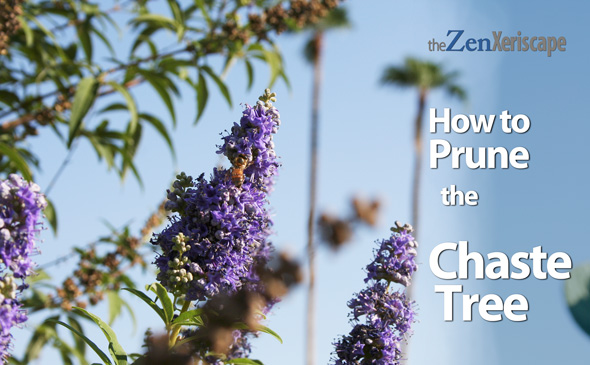The chaste tree, which I’ve also heard called the vitex tree (Vitex agnus castus), wins the top prize for the easiest-to-grow plant in my xeriscape. It produces long panicles (branching clusters of flowers) that are covered with beautiful blue flowers in the spring and fall. Read about the pros and cons of the chaste tree to consider before buying!
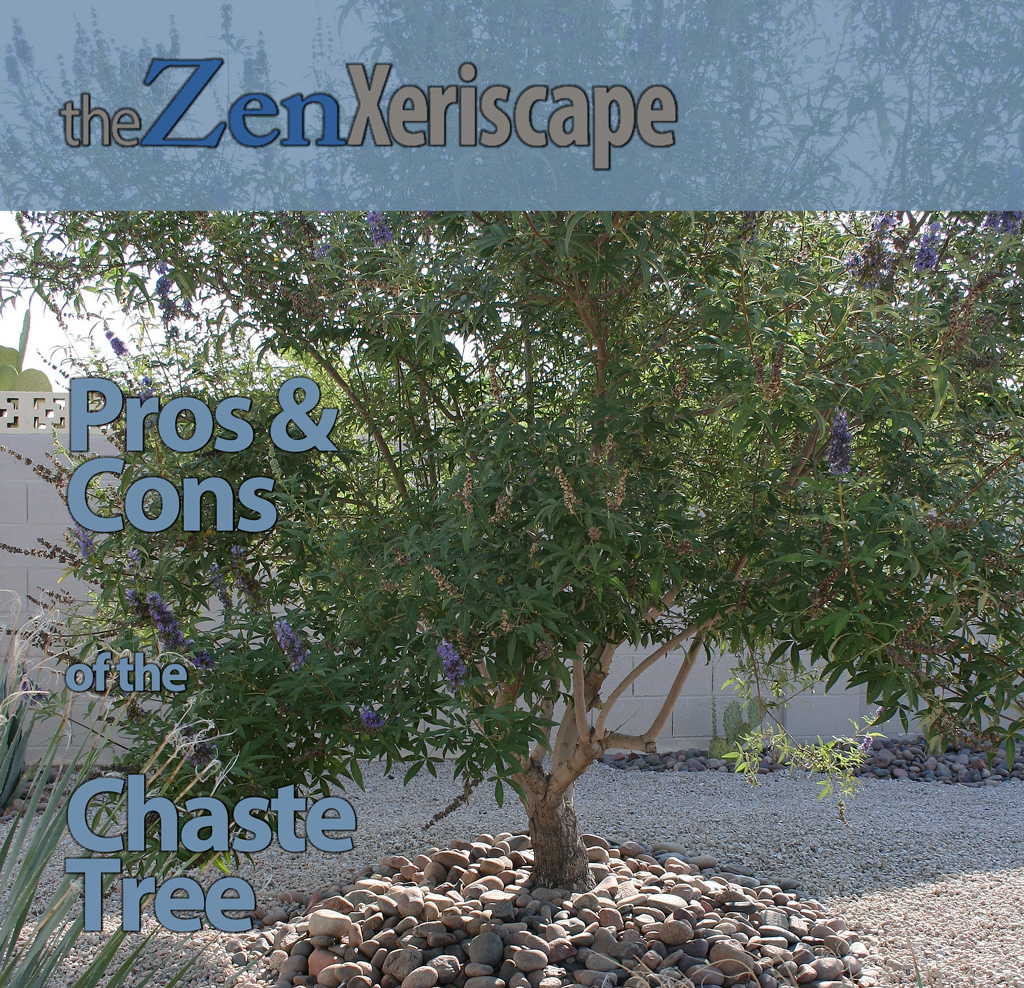
in my xeriscape. It is drought-tolerant, heat-tolerant,
and is easy to propagate!
Photo by Doug Martin
Chaste tree description
The chaste tree comes in multiple cultivars, with some varieties staying small and compact, while others can reach 20 feet tall. I’m not sure which cultivar I have, but it is still only six feet tall after seven years of growth. This plant will survive most winters in hardiness zones 6-9.
Here in Phoenix, Arizona (hardiness zone 9b and 10a), the chaste tree will go dormant during the winter months, but will sprout new buds of growth in February over the entire plant.
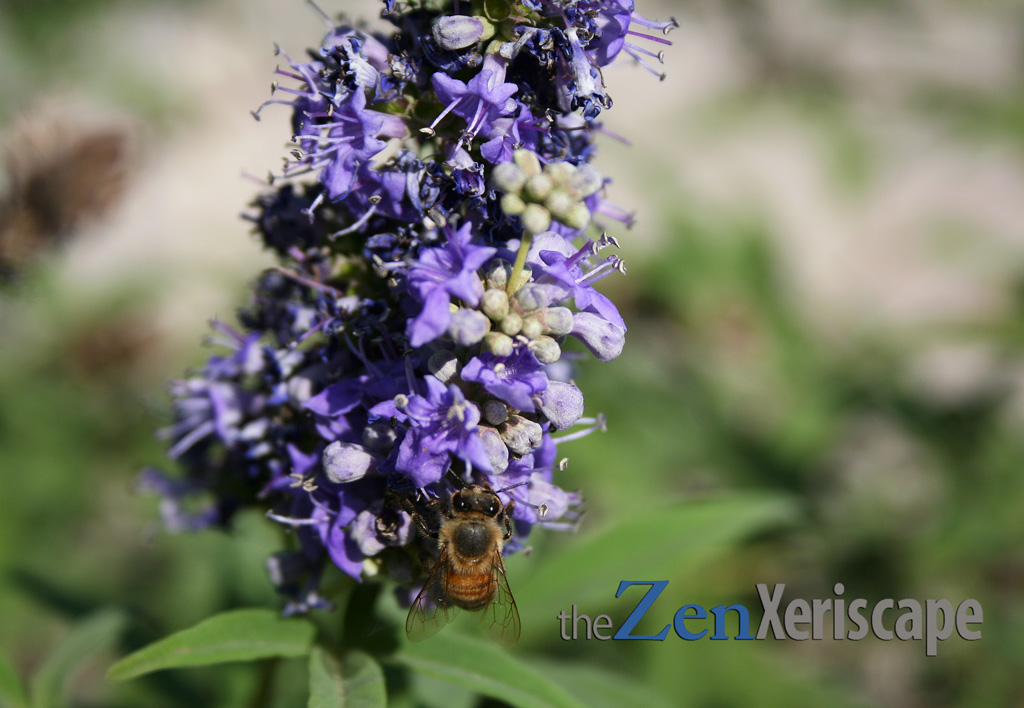
like bees and hummingbirds, as well as providing food.
Photo by Doug Martin
Garden clearance deals! Wow! (As an Amazon Associate, I earn a commission from qualifying purchases.)
In the colder hardiness zones of 5-to-6, the plant might die back to the roots, but will rebound as the days grow longer and the temperatures begin to warm up.
As I noted, this tree is super-easy to grow and will made beautiful addition to your xeriscape. In fact, this tree could be used as a lovely focal point! Now, for the pros and cons.
Chaste tree pros and cons
PROS:
Heat tolerant
The chaste tree loves the heat, and it even thrives in the heat! On those 115 degree days that we can experience in Phoenix, Arizona, my chaste tree barely displayed any stress! Of course, it didn’t flower during the summer, but its green leaves were brilliantly lush.
Drought tolerant
Since the chaste tree originates from the Mediterranean region in southern Europe, it is drought-tolerant! Even during the hottest days of a dry summer, this tree will not complain.
I don’t have a drip irrigation system, so I water the plants in my xeriscape by hand. During the southern Arizona summers, I watered this tree deeply only once a week (or even once-every-two weeks), and my vitex survived. In fact, it lived through the record-breaking 2024 summer heat wave we suffered through while some of my beautiful, native agaves died.
Cold tolerant
I had a few chaste trees when I lived in Las Cruces, New Mexico. In those higher altitudes, we would occasionally experience night-time winter temperatures in the single digits! Since the tree was already dormant and had lost all its leaves, it was not harmed at all.
Months later, as the days grew longer and temperatures warmed, buds reappeared throughout the entire plant!
Tolerant of too much water
While many plants in my xeriscape cannot survive being flooded with water, my chaste tree does survive. More water (up to a point) accelerates growth and leaf production, but I wouldn’t flood it with water every single day. That might be too much water!
Given its ability to tolerate and even thrive with too much water, the chaste tree should do well in regions that get much more rainfall than Arizona.
Easy to propagate
The chaste tree is easy to grow from seed. Right now, I have two vitex seedlings growing that I planted in early spring. One has grown so fast that it is even flowering, and it’s not even a year-old. I think that’s amazing!
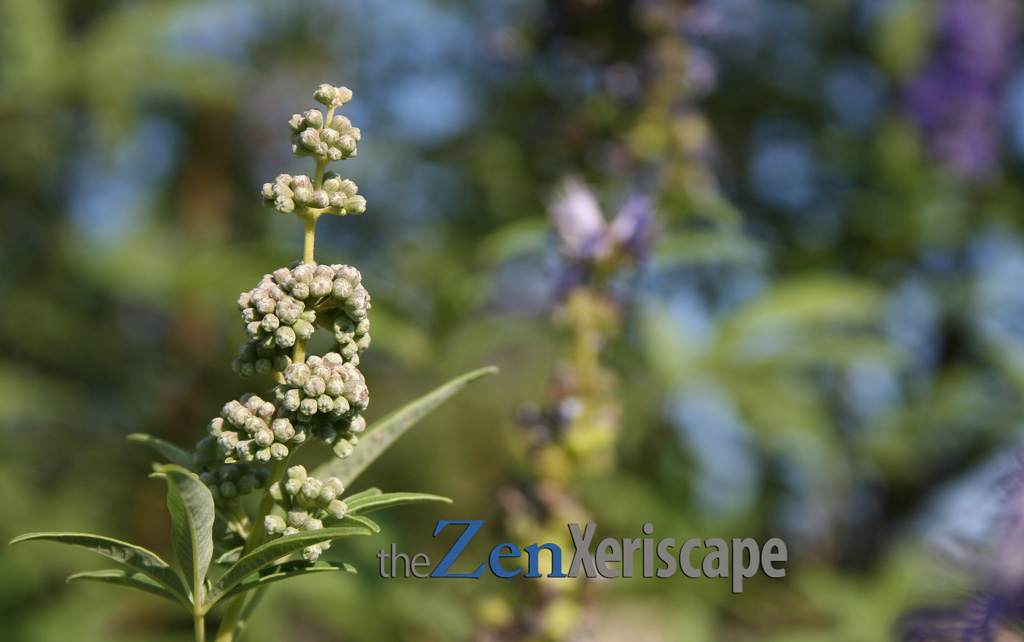
new green seeds. Eventually they dry out,
turn black and drop to the ground.
The seeds are easy to germinate, so it could become invasive.
Photo by Doug Martin
Patio deals from Amazon! Wow! (As an Amazon Associate, I earn a commission from qualifying purchases.)
Attracts wildlife
The chaste tree attracts abundant wildlife. In my xeriscape, the finches love their chaste tree just as much as the bees do. The doves and coveys of quail prowl the ground for food underneath the tree, and enjoy the shade for a mid-day siesta.
Beautiful flowers, pretty tree
In addition to the beautiful clusters of small blue flowers, which are complemented by the lush green leaves, the chaste tree also can be grown in interesting, multi-trunk shapes. In addition, the bark has an interesting, textured-look.
And because of its smaller size compared with other desert-friendly trees, it can be used as a focal point in smaller, more compact outdoor living spaces.
Chaste tree pros and cons
CONS:
Deciduous, goes dormant in the winter
Like many trees with leaves, the chaste tree goes dormant during the winter months. Here in Phoenix, Arizona, it begins its dormancy around the beginning of December. The dormancy of your chaste tree might depend on your hardiness zone and local climate.
But, by early February, new buds appear, and by mid-to-late March, the chaste tree is covered in lush green leaves.
However, in Las Cruces, New Mexico, this tree stayed dormant a little longer. But even after its long, dormant sleep in those higher-altitude, colder winter mornings, my chaste tree would always come back to life in early spring with new buds.
Can be invasive
In my experience, the chaste tree can be invasive. Every little flower produces a black seed (see photo below), which eventually dries out and drops to the ground (unless eaten by the birds). I often pull out stray seedlings growing near the parent.
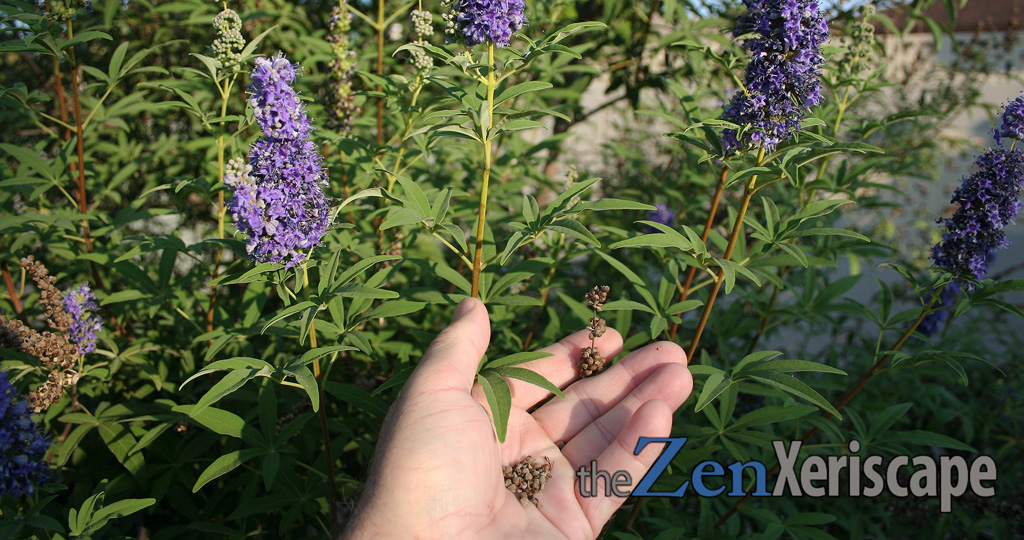
from the chaste tree. The seeds can easily germinate
and cause the tree to become invasive.
Photo by Doug Martin
Deals on garden tools! Wow! (As an Amazon Associate, I earn a commission from qualifying purchases.)
My guess is that if you grow this tree in a region that receives more rain, this plant might become even more invasive. So before you put this plant in your landscape, please allot a little time to pull stray seedlings. They can spread like weeds!
Requires pruning
After the flowers die, it’s best to cut off all the old panicles which hold the cluster of wilted flowers and seeds. Because the tree will be filled with panicles, this process can take a little time. However, the chaste tree will reward your efforts by becoming even more lush and full of flowers in the fall after pruning.
TAKEAWAYS:
The chaste tree pros and cons
So, those are the pros and cons of the chaste tree. If you ever see the chaste tree or vitex tree for sale in your local nursery, I recommend you buy it and plant it! It makes a beautiful focal point in any xeriscape, and is one of the most hardy plants you will find.
Content and photos by Doug Martin and The Zen Xeriscape

Amazon clearance deals! (As an Amazon Associate, I earn a commission from qualifying purchases.)

